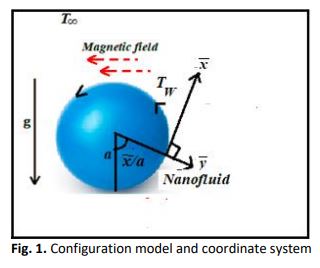Using Micropolar Nanofluid under a Magnetic Field to Enhance Natural Convective Heat Transfer around a Spherical Body
DOI:
https://doi.org/10.37934/arfmts.96.1.179193Keywords:
Magneto-hydrodynamic, natural convection, micropolar nanofluid, Keller box methodAbstract
An analysis is discussed of the heat and mass transfer for micropolar nanofluid in presence of natural convection from a spherical body with magneto-hydrodynamic (MHD) effects. The constant wall temperature boundary condition is also studied. By employing proper similarity transformations, the governing equations are converted into a set of partial differential equations (PDEs) with the used boundary conditions, which can then be solved numerically via the efficient Keller-box implicit numerical finite difference method. The numerical results of impacts of the controlling parameters on heat transfer physical quantities have been presented, tabular and graphically, by MATLAB symbolic software. Comparisons of the current study results to previously published results show good agreement, indicating that our numerical computations are legitimate and accurate. Increasing nanoparticle volume fraction is observed to depress local skin friction, Nusselt number, and angular velocity while the reverse effects are observed for velocity and temperature.
Downloads

































